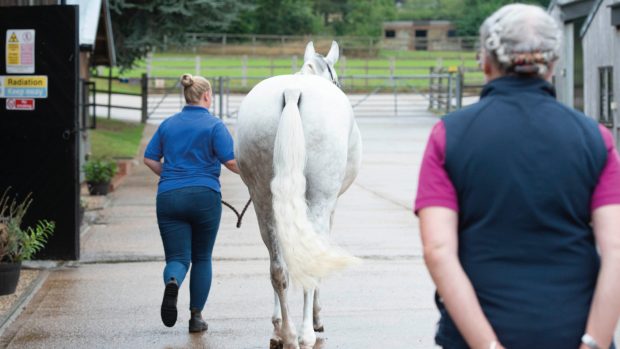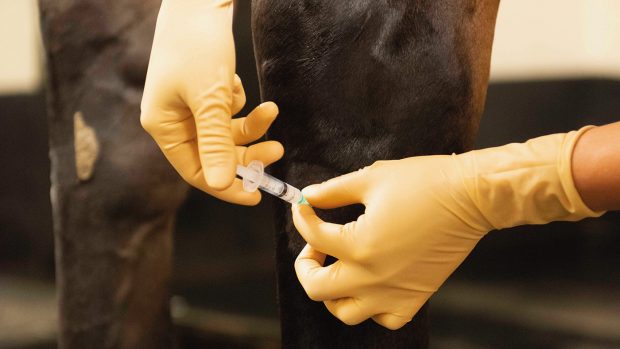Hindlimb lameness is more common than many people realise, particularly when the onset is insidious, subtle and affects both hindlegs equally.
Often a coexisting frontleg lameness detracts from an underlying problem behind and the hindlimb asymmetry only becomes apparent once the vet has resolved the problem in front.
If you suspect your horse is not right behind you should observe him at rest in the stable and paddock. Signs that may point to low-grade discomfort in the hind legs include:
- looking tucked up and roach-backed, with the hindlegs held unusually straight
- constantly shifting weight from one hindfoot to the other or continuously rest one foot only
- occasionally snatching up one hindlimb, then gingerly lower the toe back to the ground
- have difficulty getting up after lying down
- resentment when you picking up one or more limbs
- uneven wear to his hind shoes, particularly in the toe region
Before calling the vet, you can undertake preliminary examinations to help confirm if there is a problem.
First stand the horse square on a level surface and observe him from behind, noting any obvious areas of asymmetry or swelling, particularly in the hindquarters. Run your hands over both hindlimbs, noting any lumps, bumps or swellings and if the horse resents it when you touch them.
Watch the horse being walked and trotted up on a hard, level surface and listen to the rhythm of the footfalls. A stiff limb flight accompanied by dragging the toe, a failure to track up, or poor hindlimb impulsion could be suspicious.
In more severe cases the horse will take his weight forward, and therefore nod, when the lame hindleg and diagonal hit the ground, with the head going back up as the other diagonal of sound hindlimb/forelimb bear the weight. This can give the false impression of forelimb lameness.
Lungeing may accentuate a subtle lameness, with the horse being reluctant to trot freely, preferring to canter instead.
Vets examination
The vet will carry out, but in greater detail, the checks you have already done yourself. He will also perform flexion tests and may want to see the horse ridden under saddle.
An accurate history of the problem will be very helpful for the vet and should include:
- the duration of the problem and whether it was sudden or gradual
- the presence of any traumatic incident
- whether things improve or deteriorate with exercise
- your findings and observations
Methods used to help diagnose hindlimb lameness include high-speed treadmills to detect and evaluate subtle gait abnormalities; nerves blocks; radiography; ultrasound; scintigraphy and thermography. Blood tests can also help to differentiate true hindlimb lameness from horses whose gait abnormality is due to tying up or an infection.



